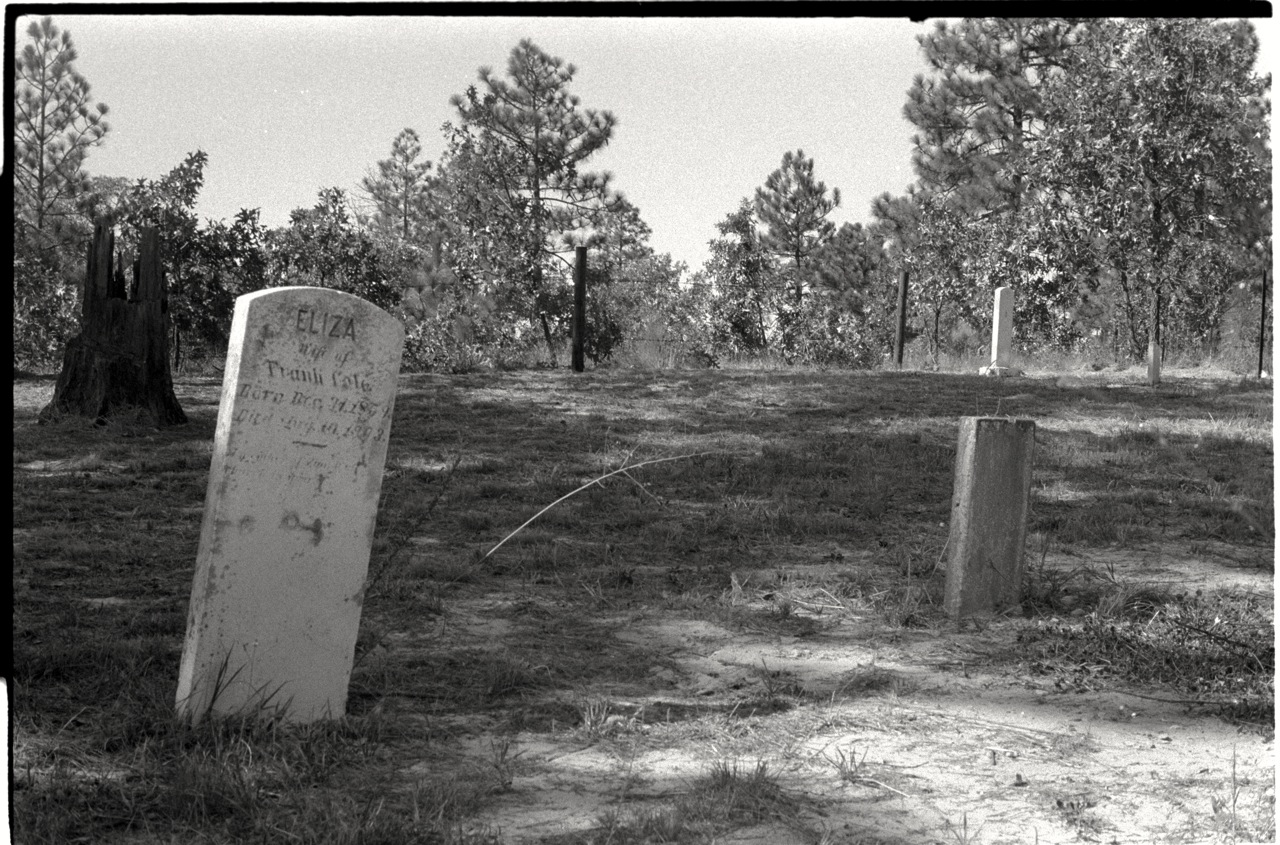
A couple of weeks ago, friend of the Southern Folklife Collection, Bob Carlin, brought in a few reels of 16mm film, 35mm negatives, and open reel tapes from the Fred Gerlach estate. More on the film on a future date, but Bob’s visit had me looking into the music of Fred Gerlach. A remarkable and innovative 12-string guitar player I first heard on volume 2 of Tompkins Square‘s brilliantly curated multi-volume guitar series, Imaginational Anthem, Gerlach released only three albums throughout his career: Twelve-String Guitar – Folk Songs and Blues Sung and Played by Fred Gerlach (Folkways, 1962), Songs My Mother Never Sang (Takoma, 1968), and a cassette, Easy Rider (Eyrie, 1993).
An active participant in the 1950s New York folk scene, Gerlach spent time playing with and learning from Leadbelly, Woody Guthrie, and Tiny Ledbetter (Leadbelly’s niece). Along with Tiny Robinson, Gerlach made recordings Reverend Gary Davis in 1957 that later became the album Pure Religion and Bad Company (77 Records, 1961). Knowing he spent time in Washington Square Park and the Folklore Center, it was no surprise to find images of Gerlach in the Photo-Sound Associates images in the Ron Cohen Collection (20239). Photo-Sound Associates photographer, Ray Sullivan documented this concert by Gerlach, on his 12-string, and Reverend Gary Davis at Town Hall on 8 March,1958. For more images seeImage Folder PF-20239/007_02 in the finding aid for the Ron Cohen Collection (20239). Gerlach moved to California in the early 1960s and lived there until his death in 2009. He became well known woodworker, luthier, craftsman (he was reportedly building an airplane in his attic) and musician. He continued to play, if sporadically, around town, often at Los Angeles laundromats, and was a regular at McCabe’s Guitar Store where Ry Cooder and Taj Mahal likely picked up a few pointers.
We would love to have been at this concert in 1958. You can hear at least one tune by Gerlach online, his version of “Gallows Pole.”
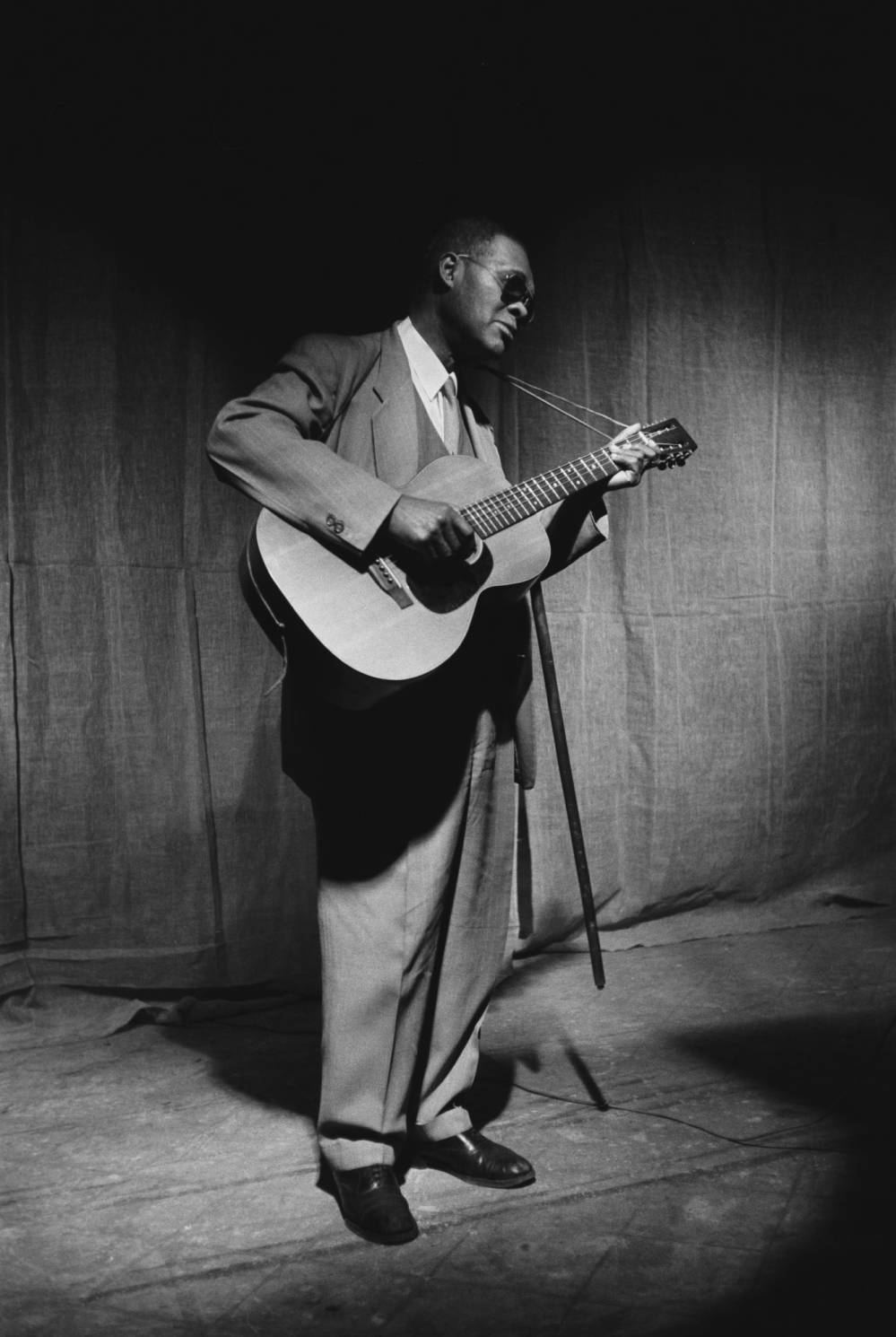
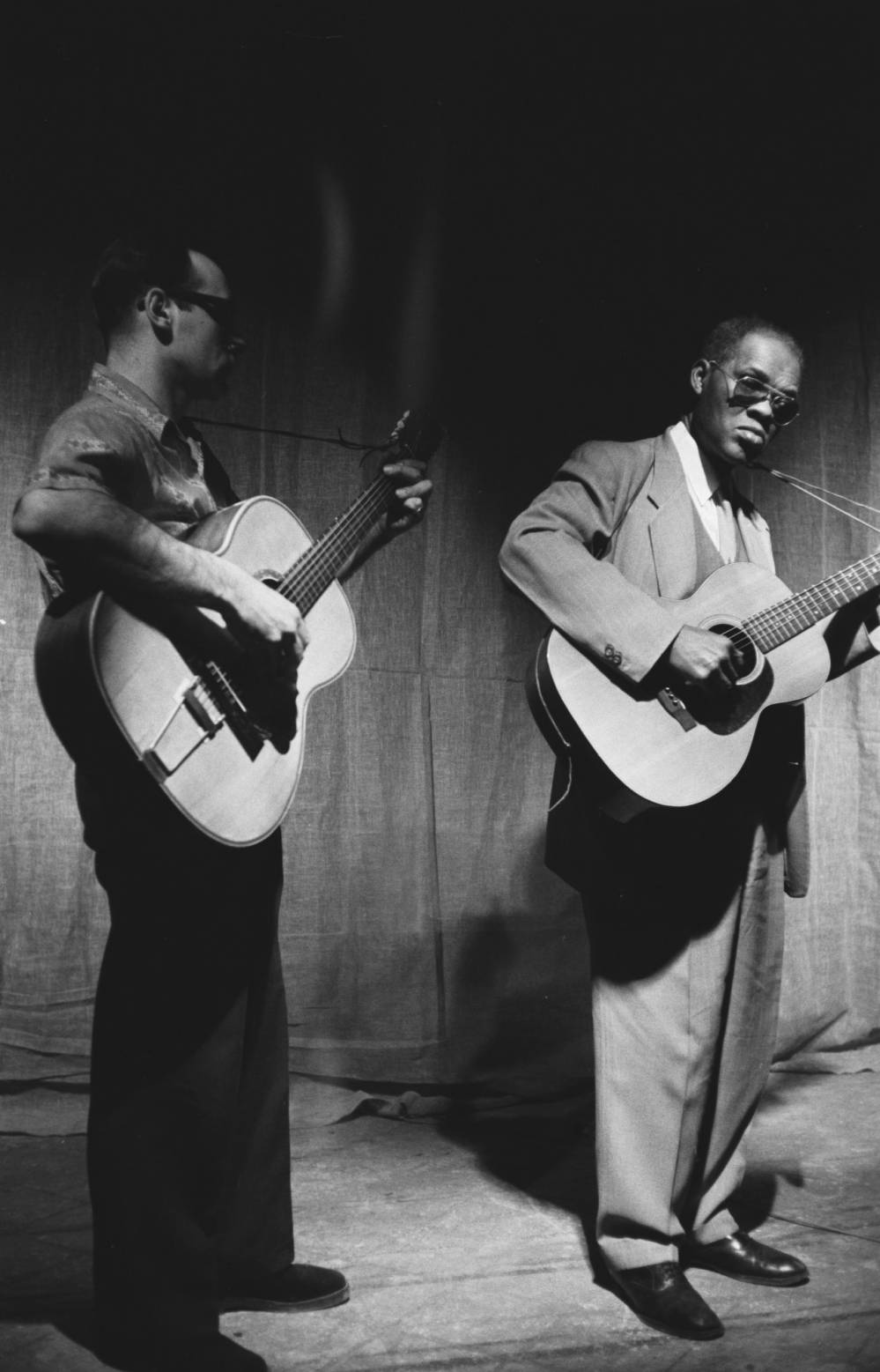
Category: Uncategorized
Out of the stacks: a sampling from the SFC reference shelf
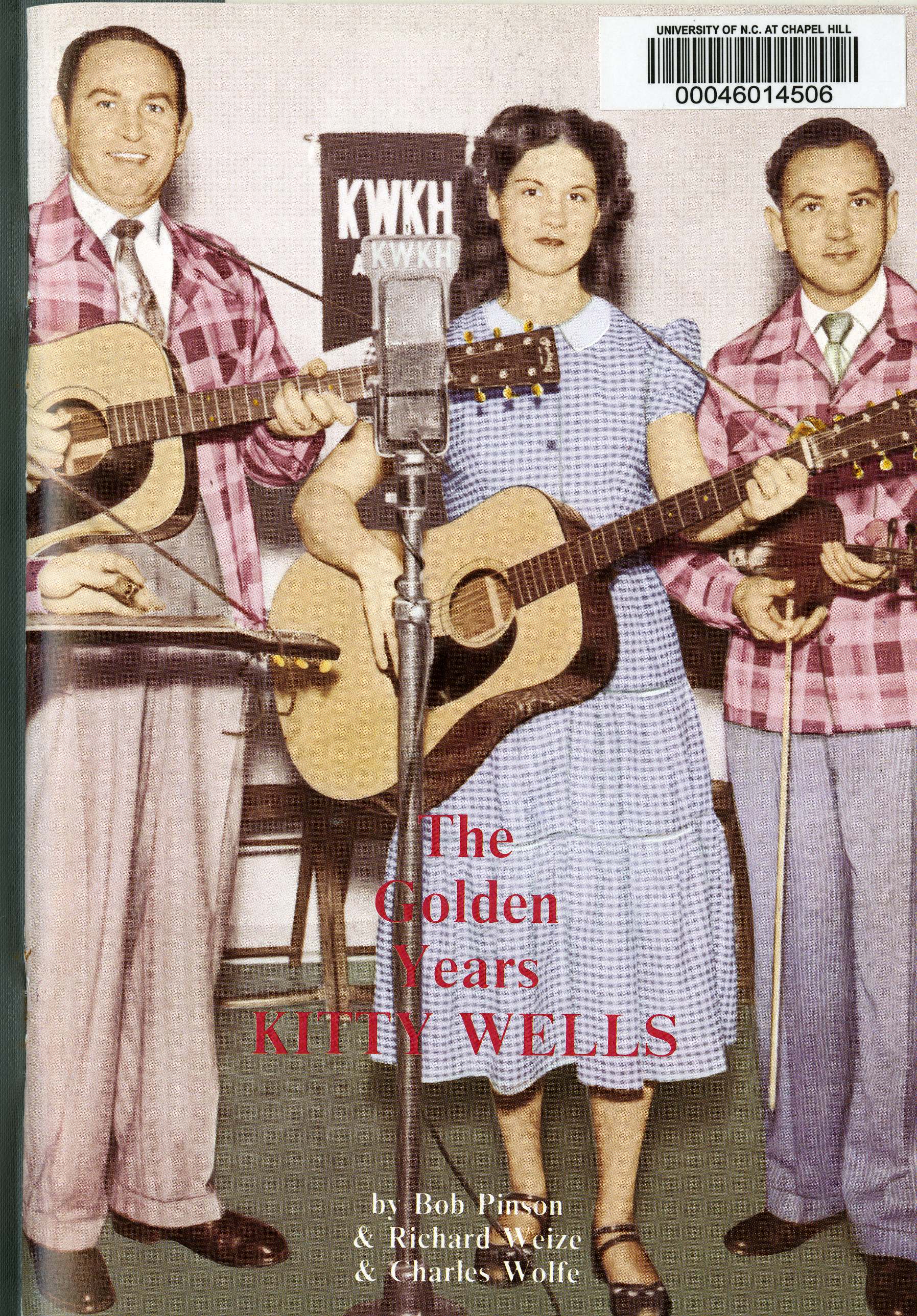
Fun research in the Southern Folklife Collection today. Always great to have an opportunity to dig through the SFC reference books. If you’d like to join us for some research, please visit Wilson Library and jump right in with one of these texts, like The golden years : Kitty Wells (pictured above).
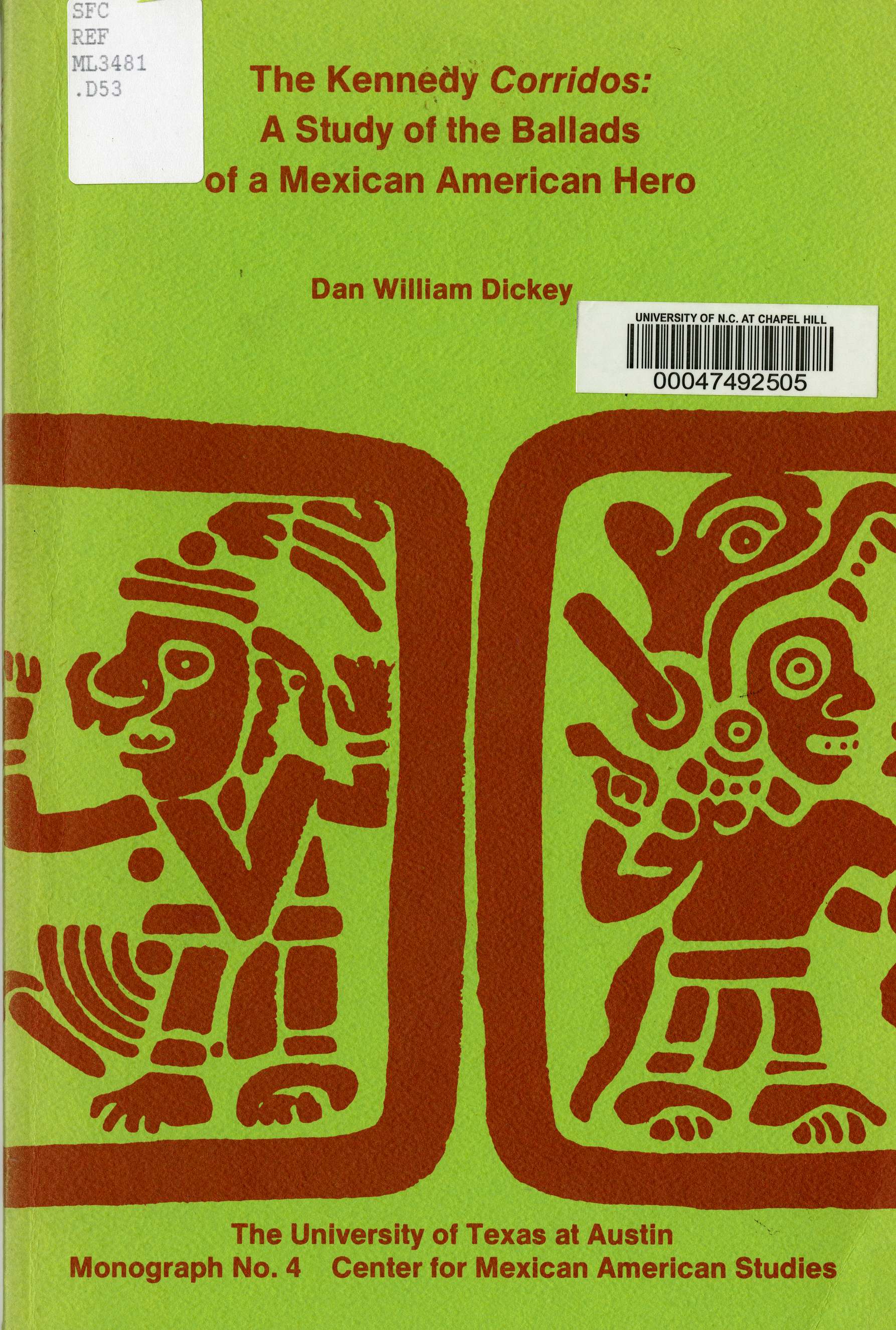 The Kennedy corridos : a study of the ballads of a Mexican American hero
The Kennedy corridos : a study of the ballads of a Mexican American hero
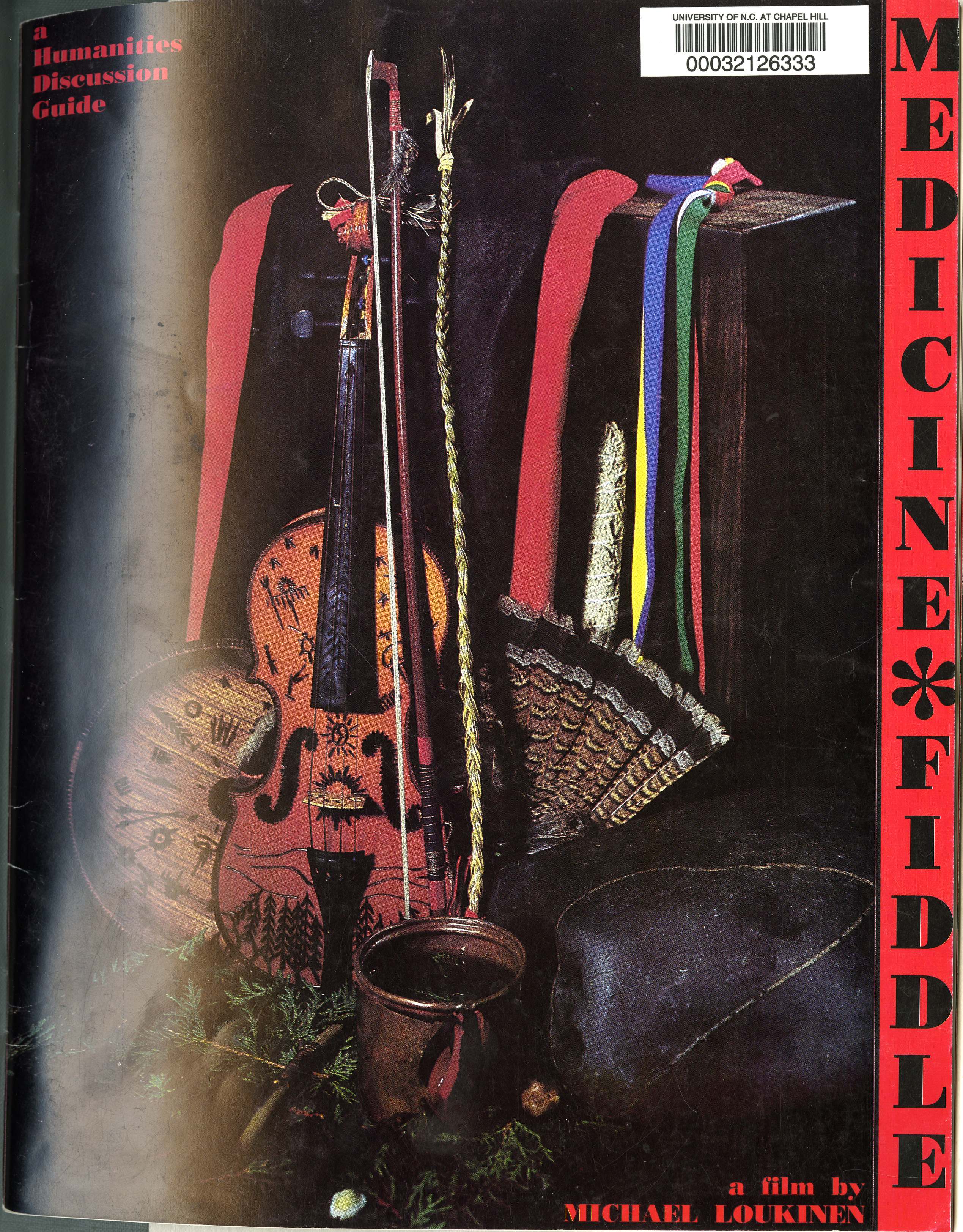
Medicine fiddle : a humanities discussion guide, a film by Michael Loukinen
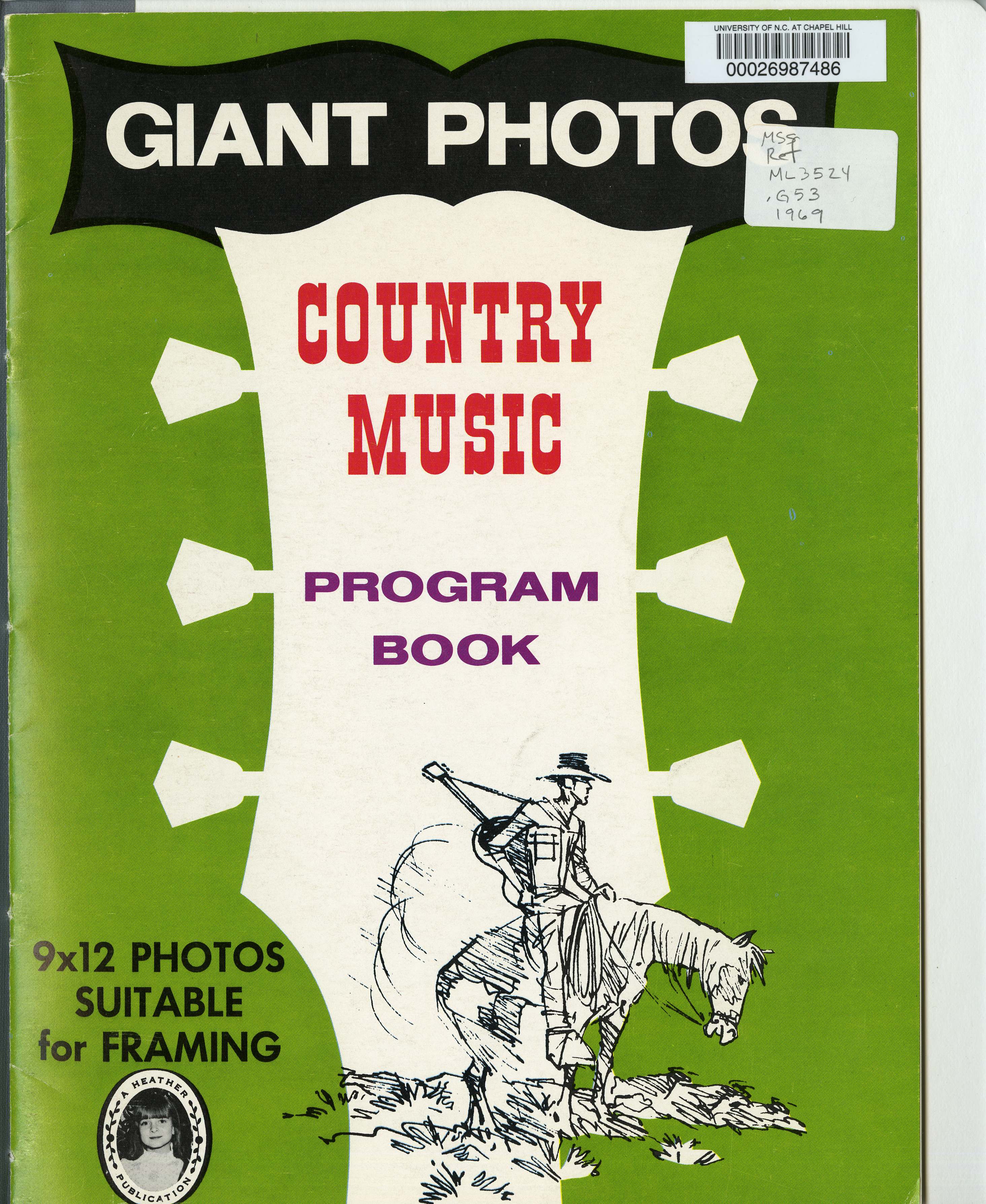
Giant photos Country Music program book

Country Music Spectacular Souvenir Album
American Folk Music in the Ivory Coast, 1983
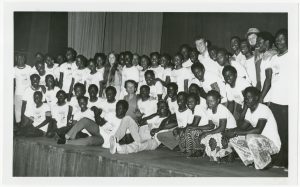
In 1983, the U.S. State Department sponsored a tour by American folk musicians through Zaire, Cameroon, Senegal, and the Ivory Coast. Along with Mike Seeger, the tour group also included Liz Carroll, Mick Moloney, Eileen Golden, Fris Holloway, Sandman Sims, Donny Golden, John Dee Holeman and Alan Belt.
Part of this tour included a Festival of Traditional American Dance held in Abidjan, Ivory Coast between September 26-October 1, 1983, in which the U.S. and Ivorian musicians demonstrated folk music, instruments, and dancing from their respective locales.

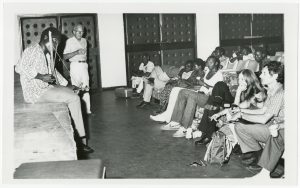
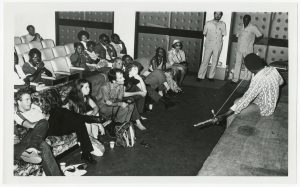

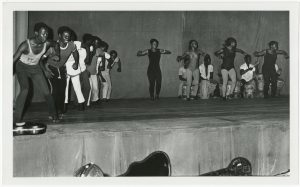
The trip was considered a success, except (as noted in the letter below) that one of the American tour members lost track of their Converse sneakers.
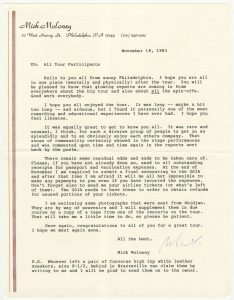 These images were preserved as part of the Southern Folklife Collection‘s digitization project, “From the Piedmont to the Swamplands: Preserving Southern Traditional Music,” funded by a grant from the National Endowment for the Humanities. They are available in the Mike Seeger Collection as Image Folder 20009/0025.
These images were preserved as part of the Southern Folklife Collection‘s digitization project, “From the Piedmont to the Swamplands: Preserving Southern Traditional Music,” funded by a grant from the National Endowment for the Humanities. They are available in the Mike Seeger Collection as Image Folder 20009/0025.
Cabin fever Friday at the Southern Folklife Collection

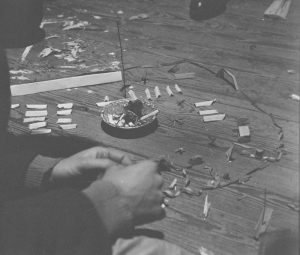 It’s not Boston, but here in North Carolina we’ve had an unexpected, late winter, one-two punch the past couple of weeks with ice and snow. The amount of school and work that has been cancelled has certainly fueled some cabin fever creativity in our own households, but not sure if anyone has gone so far as Paul Clayton, Bob Brill, Dave van Ronk, Lee Hoffman, and their friends did at this party in New York circa 1959. We’re really not sure what’s going in these images–a game, a collaborative sculpture, a ceremonial practice, building a diorama? Let us know if you have any ideas. All images in this post were photographed by Ray Sullivan, a partner in Photo-Sound Associates along with photographer Aaron Rennert and sound-recordist Joel Katz, a team dedicated to documenting the folk scene in New York City in the late 1950s and early 1960s. Over 4000 images from the Photo-Sound Associates have been digitized and can be viewed through Ron Cohen Collection (20239) finding aid via the Southern Folklife Collection.
It’s not Boston, but here in North Carolina we’ve had an unexpected, late winter, one-two punch the past couple of weeks with ice and snow. The amount of school and work that has been cancelled has certainly fueled some cabin fever creativity in our own households, but not sure if anyone has gone so far as Paul Clayton, Bob Brill, Dave van Ronk, Lee Hoffman, and their friends did at this party in New York circa 1959. We’re really not sure what’s going in these images–a game, a collaborative sculpture, a ceremonial practice, building a diorama? Let us know if you have any ideas. All images in this post were photographed by Ray Sullivan, a partner in Photo-Sound Associates along with photographer Aaron Rennert and sound-recordist Joel Katz, a team dedicated to documenting the folk scene in New York City in the late 1950s and early 1960s. Over 4000 images from the Photo-Sound Associates have been digitized and can be viewed through Ron Cohen Collection (20239) finding aid via the Southern Folklife Collection.
 No matter what’s going on, it looks pretty fun. And Bob Brill is providing musical accompaniment on the kazumpet while Dave van Ronk and Paul Clayton harmonize accompaniment. We hope you had at least as much fun during your last “weather event.” Looking forward to Spring!
No matter what’s going on, it looks pretty fun. And Bob Brill is providing musical accompaniment on the kazumpet while Dave van Ronk and Paul Clayton harmonize accompaniment. We hope you had at least as much fun during your last “weather event.” Looking forward to Spring!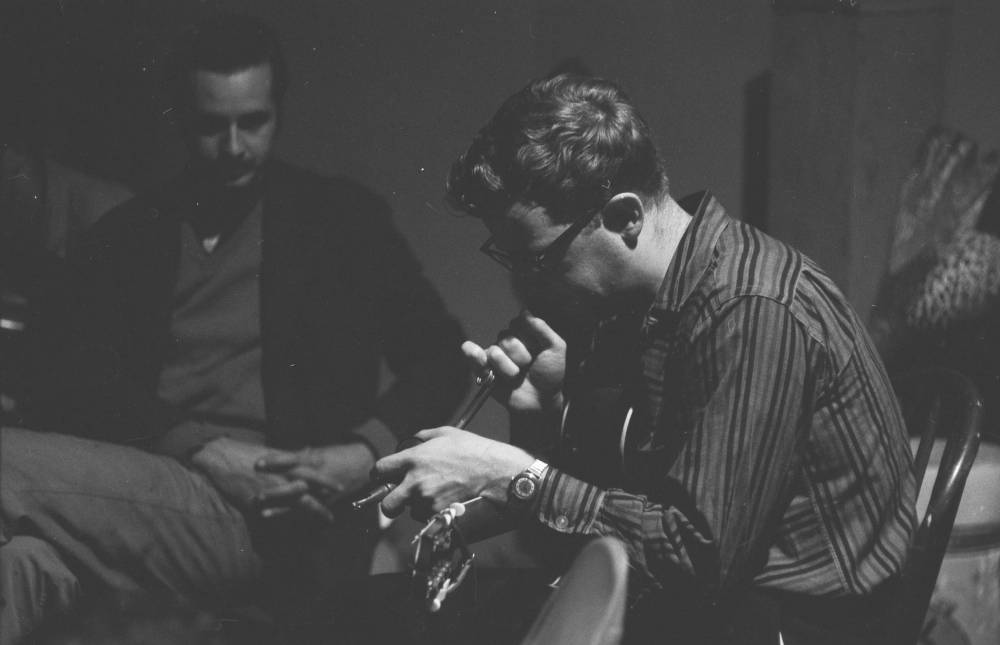

Songs from Limestone Country
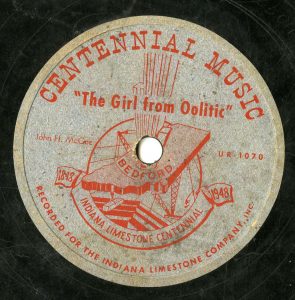
We came across an interesting bit of American industrial history in a recent 78rpm cataloging session in the Southern Folklife Collection: a circa 1948 record promoting the Indiana Limestone Company, featuring on its label a relatively complex illustration of the limestone mining process. Celebrating the 100th anniversary of Indiana’s limestone industry, it includes two songs honoring the state’s favorite sedimentary rock : “Old Limestone Quarry” and “Girl from Oolitic.” (Oolitic is a town in Indiana known for its oolite, a kind of limestone).
We cannot find any information on this release, except that John H. McGee applied for copyright for the two songs in 1949.
We’ve included an excerpt from Side A here, which features an unknown vocalist and big band:
“Old Limestone Quarry”
The record is available at the SFC as call no. 78-17816.
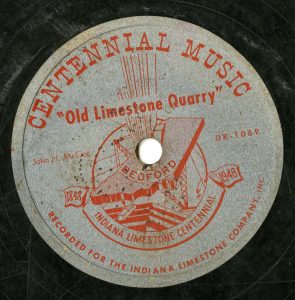
Music Biographer Barry Mazor and Musician Dom Flemons at Wilson Library Feb. 6
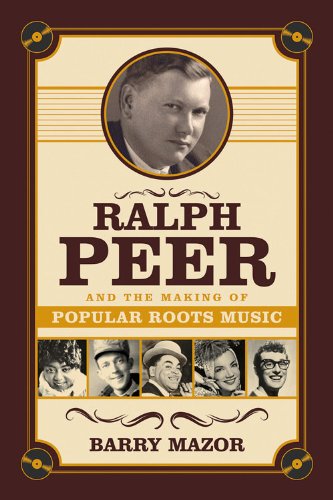
Ralph Peer and the Making of Popular Roots Music
Friday, Feb. 6, 2015
Wilson Special Collections Library
Pleasants Family Assembly Room
5:30 p.m. Reception (program will begin at 6 p.m.)
6 p.m. Book Talk by Barry Mazor
7 p.m. Concert by Dom Flemons
Free and open to the public
Information: Liza Terll, Friends of the Library,
(919) 548-1203
Music scout, record producer, and industry visionary Ralph Peer helped shape and popularize American country and roots music from the 1920s through the ’40s. On Feb. 6, at 6 p.m., a new biography of Peer will be the topic of a talk by the author, Barry Mazor, at UNC’s Wilson Special Collections Library. A concert by musician Dom Flemons will follow at 7 p.m.
The Southern Folklife Collection (SFC) in Wilson Library is the program sponsor. Mazor and Flemons have both conducted extensive research in the Collection and are friends with one another, said SFC curator Steve Weiss.
Ralph Peer and the Making of Popular Roots Music was released in November to critical acclaim. The New York Times called it “a beautifully written portrait of an utterly fascinating man. One is continually astonished at how a shipping clerk from Independence, Mo., at various junctions in his life, made decisions that transformed American music by bringing new artists and forms of music — from country, blues and bluegrass to early rock ‘n’ roll — to millions of citizens who had not yet encountered them.”
Peer’s accomplishments include sparking the blues craze by recording Mamie Smith’s “Crazy Blues;” discovering the Carter Family and Jimmie Rodgers; and helping transform popular music well through the postwar years.
In the stacks of the SFC, Mazor — a winner of the 2008 Charlie Lamb Award for Excellence in Country Music Journalism — was able to draw on a unique recorded interview with Ralph Peer, as well as correspondence between Peer and musician Sara Carter of The Carter Family, found in the SFC’s Ed Kahn Collection. Those letters will be on display at the event.
 Flemons, too, has deep ties to the SFC. In 2012, the Grammy-winning banjo player and former member of the Carolina Chocolate Drops described in an interview how video recordings and interviews in the Collection have informed his work. “There is something that a visual artifact can do that is greater than a mere recording,” he said. “You get to see the player and performer in the flesh and see how they played the music.”
Flemons, too, has deep ties to the SFC. In 2012, the Grammy-winning banjo player and former member of the Carolina Chocolate Drops described in an interview how video recordings and interviews in the Collection have informed his work. “There is something that a visual artifact can do that is greater than a mere recording,” he said. “You get to see the player and performer in the flesh and see how they played the music.”
The Dom Flemons Papers, 2004-2009, are part of the Southern Folklife Collection, and consist of audio and video recordings, photographs, programs, and related materials that Flemons has donated. Approximately 200 photographs from the collection, including publicity stills of the Carolina Chocolate Drops, may be viewed online, via the UNC Library’s Carolina Digital Repository.
Etta Baker at home
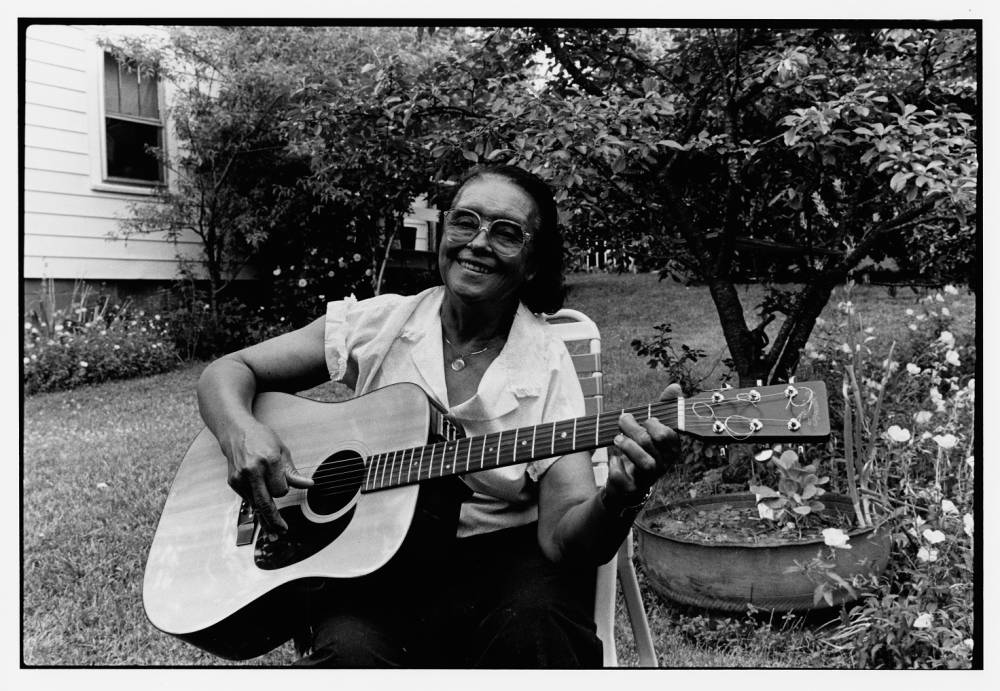
Beautiful portrait of Etta Baker at her home in Morganton, North Carolina by Mike Seeger. P20009_0003 in the Mike Seeger Collection (20009).
If you have not yet had the opportunity to hear Mrs. Baker’s music, we highly recommend you remedy that as quickly as possible. There are ample opportunities here at Wilson Library and we welcome you to visit for some research, but until then here is an interview with Etta Baker by David Holt (whose papers are also at the Southern Folklife Collection). And if that’s not enough, our friends at the Music Maker Relief Foundation released a few albums by this North Carolina and national treasure (including a remarkable disc with Etta Baker and Taj Mahal).
Little Jimmy Dickens, 1920-2015
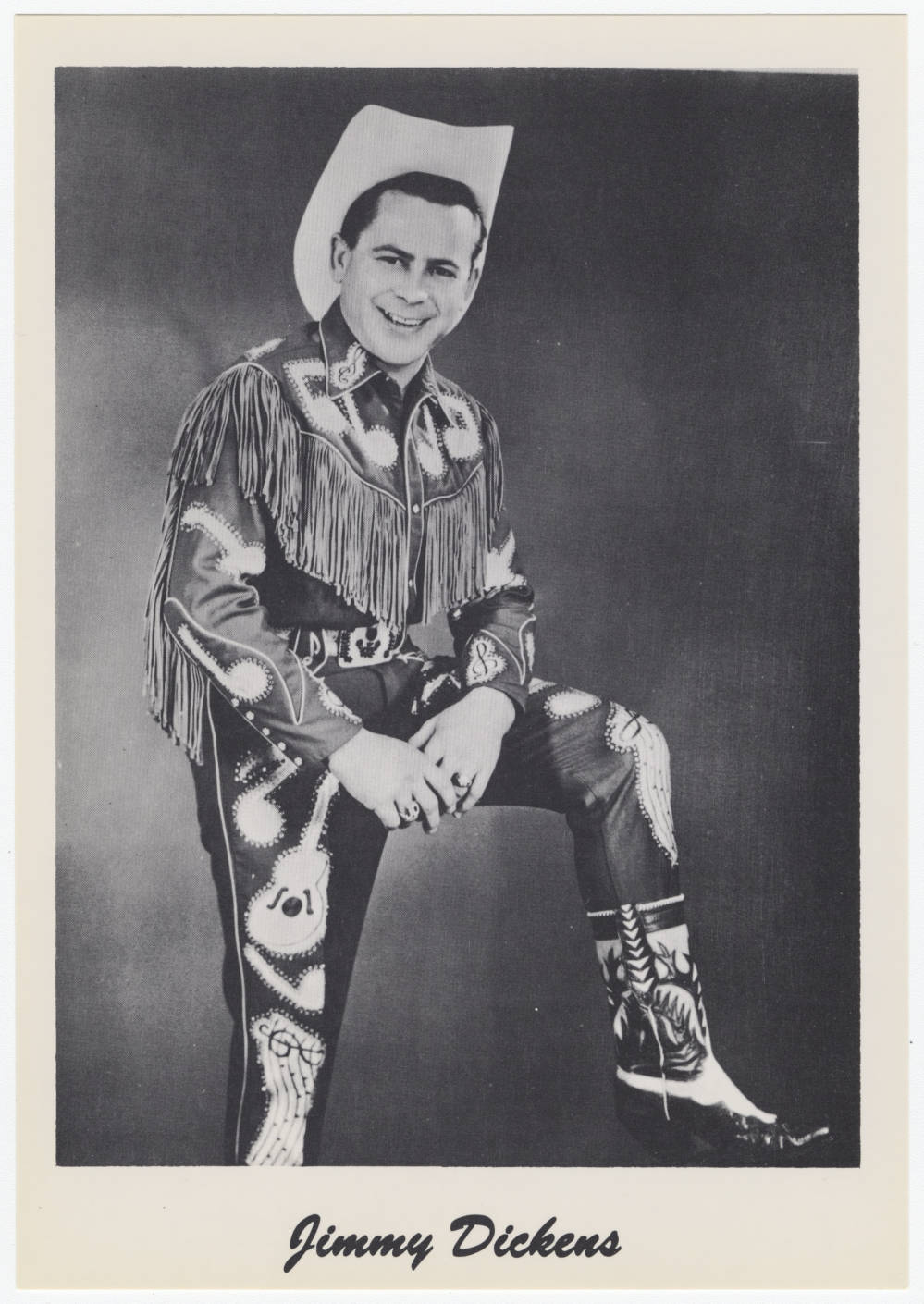 Little Jimmy Dickens in one of his trademark suits, image from the John Edwards Memorial Foundation Records (20001), one of many images of country, folk, and traditional musicians now available for research online. He started as a member of the Grand Ole Opry in 1948 and became a member of the Country Music Hall of Fame in 1983. At the time of his death, he was the oldest living member of the Grand Ole Opry. Dickens passed away in Nashville on January 2, 2015.
Little Jimmy Dickens in one of his trademark suits, image from the John Edwards Memorial Foundation Records (20001), one of many images of country, folk, and traditional musicians now available for research online. He started as a member of the Grand Ole Opry in 1948 and became a member of the Country Music Hall of Fame in 1983. At the time of his death, he was the oldest living member of the Grand Ole Opry. Dickens passed away in Nashville on January 2, 2015.
Nice boots, Tater, nice boots.
SFC Humanities Advisory Meeting
 On November 17th, the SFC arranged a humanities advisory group meeting as part of the Extending the Reach of Southern Audiovisual Sources grant. The group consisted of UNC library staff, university professors, and visiting digital humanities experts, including Nathan Salsburg (Curator of the Alan Lomax Archive), Allen Tullos (Professor of History at Emory University, and co-director of the Emory Center for Digital Scholarship), and Sam Brylawski (Chair of the National Recording Preservation Board for the Library of Congress). The purpose of the meeting was to discuss the preservation of, and access to SFC’s large holdings of analog moving image and sound materials.
On November 17th, the SFC arranged a humanities advisory group meeting as part of the Extending the Reach of Southern Audiovisual Sources grant. The group consisted of UNC library staff, university professors, and visiting digital humanities experts, including Nathan Salsburg (Curator of the Alan Lomax Archive), Allen Tullos (Professor of History at Emory University, and co-director of the Emory Center for Digital Scholarship), and Sam Brylawski (Chair of the National Recording Preservation Board for the Library of Congress). The purpose of the meeting was to discuss the preservation of, and access to SFC’s large holdings of analog moving image and sound materials.
 The collection amounts to over 250,000 historic sound recordings on a number of at-risk formats, including wax cylinders, Digital Audio Tape (DAT), and lacquer discs. In addition, there are 3,500 video recordings on a variety of formats, and over 8 million feet of film. Over the span of the grant, the core team seeks to revamp workflows, investigate and consider new equipment and facilities, and work towards increased online streaming access in order to make more collections available to researchers, faculty, and students.
The collection amounts to over 250,000 historic sound recordings on a number of at-risk formats, including wax cylinders, Digital Audio Tape (DAT), and lacquer discs. In addition, there are 3,500 video recordings on a variety of formats, and over 8 million feet of film. Over the span of the grant, the core team seeks to revamp workflows, investigate and consider new equipment and facilities, and work towards increased online streaming access in order to make more collections available to researchers, faculty, and students.
Through the coming months we will continue to assess our workflows and carry out conservation and access assessments for SFC collections, while also keeping in mind the invaluable responses and recommendations we received from this humanities advisory group. Expect more updates on our progress to be posted to Field Trip South in 2015.
Gravestones of North Carolina

Excited to share some research from one of my favorite collections in The Wilson Special Collections Library on this All Hallows’ Eve, The M. Ruth Little Stokes Collection (20065). Architectural historian Margaret Ruth Little-Stokes received a Ph.D. in Art History and a minor in Folklore at UNC-Chapel Hill in 1984. She served as principal investigator for the North Carolina Cemetery as Cultural Artifact Project, 1981-1982, an initiative funded by National Endowment for the Humanities and directed by Terry Zug, professor in the Curriculum in Folklore at UNC-Chapel Hill.
The Project was intended to be “the first investigation in the state of historic cemeteries and graveyards as cultural benchmarks with aesthetic characteristics and iconographical content,” and focused on photographic documentation, recording, and cataloging of cemeteries in three counties: Cumberland County, N.C.; Davidson County, N.C.; and New Hanover County, N.C. The intensive survey covered Cumberland, New Hanover, and Davidson counties completely, and Lincoln County, N.C., and Catawba County, N.C., on a selective basis. Other counties were added for comparison. Intended to link demographic and cultural traits with regional practices, one of the Project’s primary focus points was to identify gravemarker artisans and carvers throughout the region and to trace their movements within, and influences over, the carving tradition.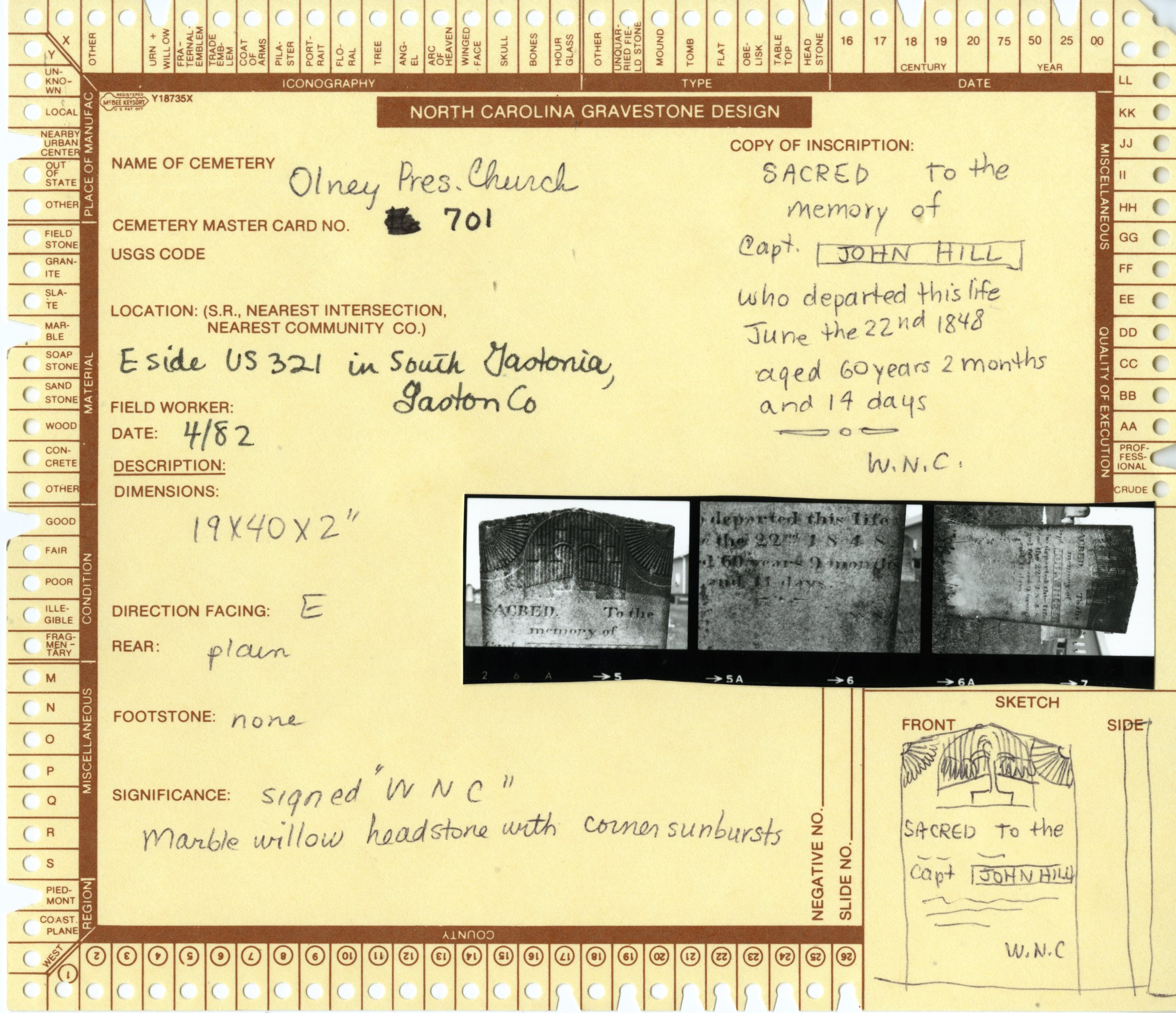
Included are master cards with cemetery survey information and topographical maps used in the research and identification process. Each master card contains the cemetery name; location; inclusive dates; topography; landscaping; boundaries; marker descriptions and design motifs; an overall site plan; and a brief history, if known.
